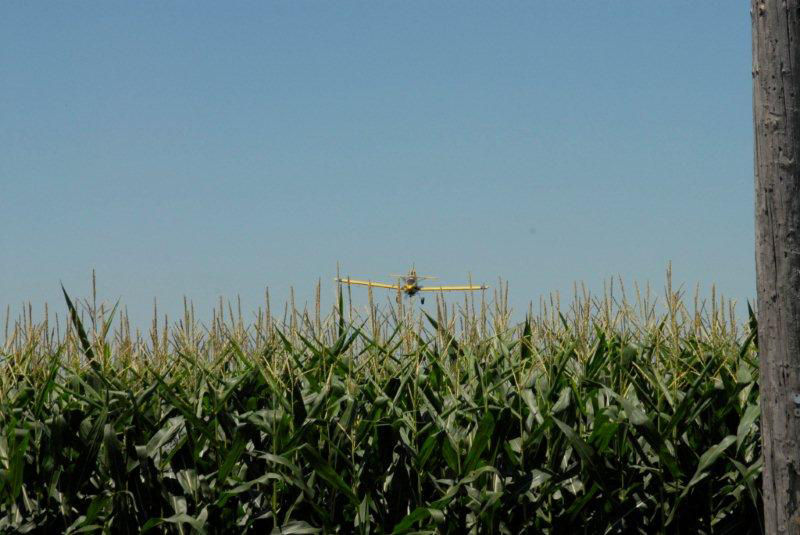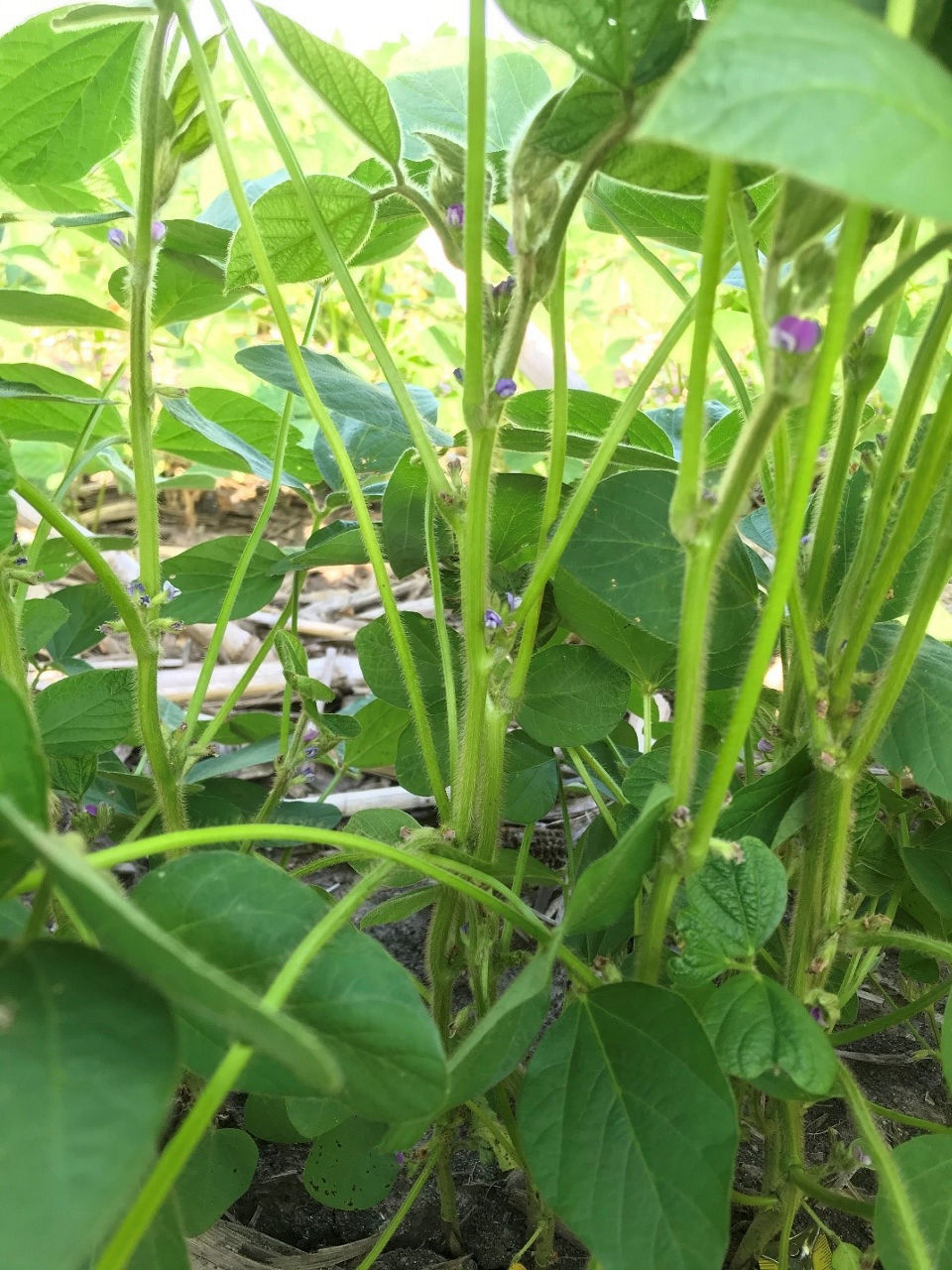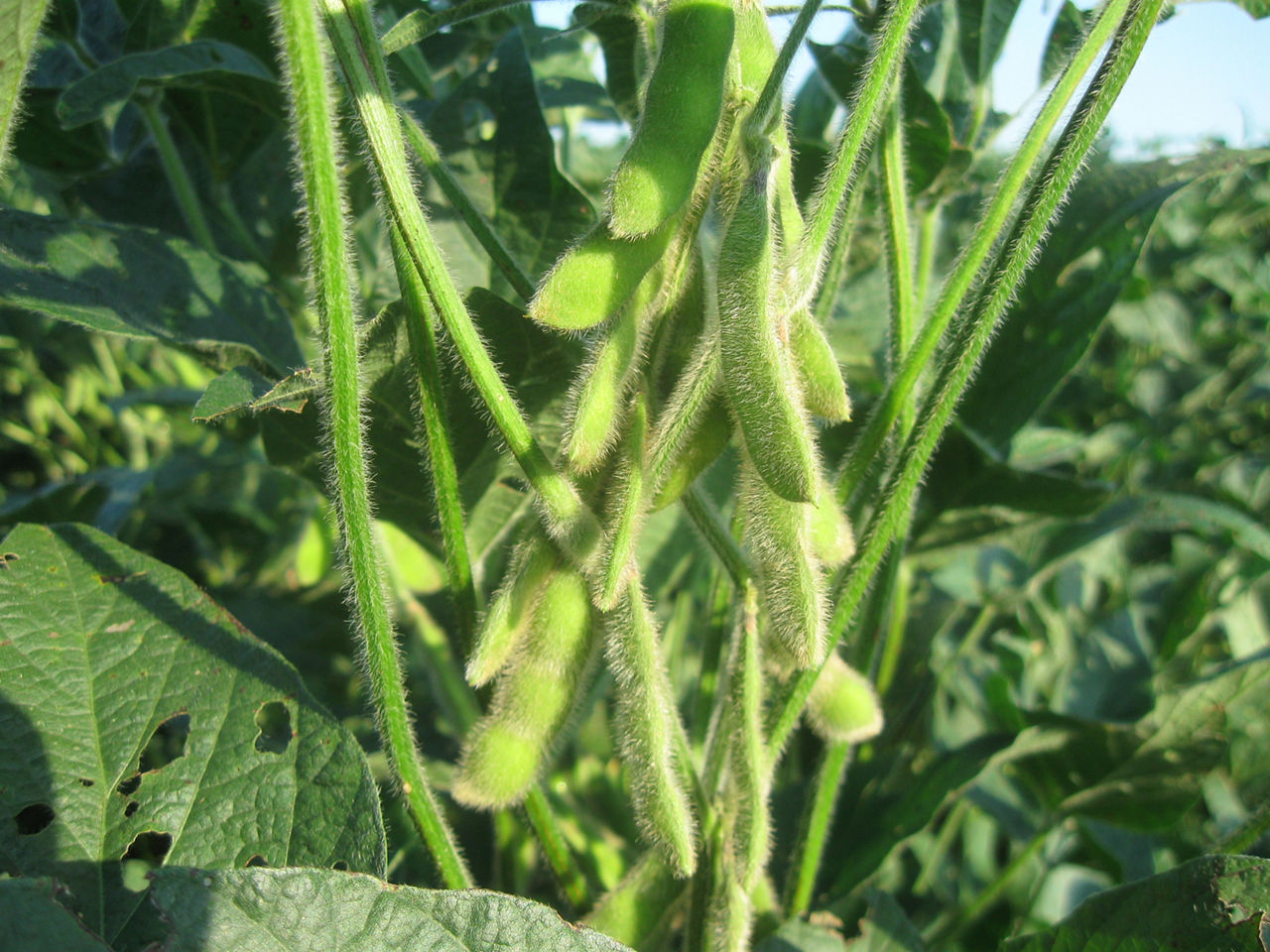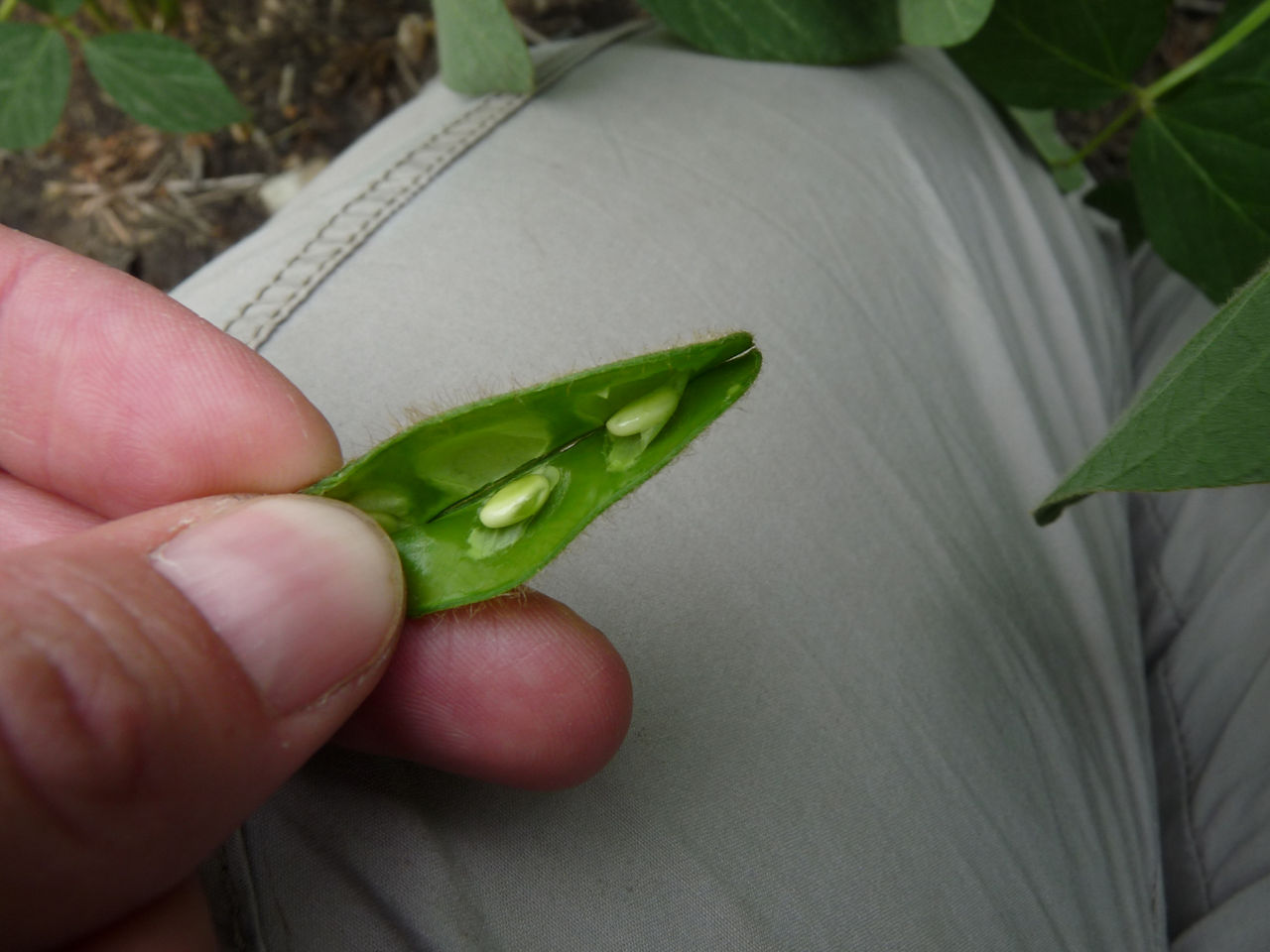7 MIN READ
Corn and Soybean Disease Management with Foliar Fungicides
July 17, 2025
Foliar crop diseases can reduce yield potential and farm profit. Integrated pest management (IPM) techniques, including seed product selection, tillage, planting date adjustment, water management, crop scouting, and foliar fungicide application(s), can be used to help manage yield potential and minimize the effects of disease outbreaks.
Each corn and soybean foliar disease is favored by different environmental conditions, which may include wet or dry growing conditions, cool or warm temperatures, survivability on or in crop residue, and crop stage of growth when infection occurs. Knowing the characteristics of each disease and field histories are important when considering IPM management options.
Fungal spores on residue may spread via wind, water, equipment, or animals. Infected residue can be buried in conventional tillage systems, which can help reduce the potential of a pathogen surviving and infecting a future crop. The potential survivability of certain pathogens increases with reduced tillage systems, though white mold is an exception that may have a lower incidence in no-till fields. Depending on the disease, planting earlier or later may help lower the potential for disease infection.
Foliar fungicides are an option for fungal disease management when other IPM practices are not practical or have been unsuccessful. A fungicide application may reduce foliar disease impact depending on corn or soybean product resistance or tolerance and disease pressure. Strobilurin and triazole fungicides and combinations of these are the primary fungicide groups for in-season corn and soybean disease management. The strobilurin fungicides are effective at controlling multiple diseases, are locally systemic, and can block spore germination and host penetration when applied prior to disease development. Triazoles are also broad-spectrum fungicides with xylem (upward) movement and can inhibit cell membrane synthesis of the pathogen, thereby limiting disease spread.
Fungicide resistance can develop when the same fungicide mode of action (MOA) is continuously used. Therefore, a different MOA fungicide should be considered if another application is warranted.
Foliar fungicides may be better at preventing rather than curing a disease, so scouting is important to identify crop growth stage for best application timing.1 If a fungicide is applied before disease infection, a protective barrier preventing infection results and curative activity can occur. Curative activity may occur when the fungicide is present within plant tissue and stops early growth of the pathogen in the tissues.1 Fungicides with curative activity do not “cure” a plant from a disease but instead limit pathogen reproduction. Curatives are most effective if applied prior to infection or within the first 72 hours after infection.1 Since individual diseases develop under different growing conditions, continuous scouting after planting is beneficial to help determine if any diseases and other pest issues are developing.
Fungicides are generally considered effective for 21 days, because new leaf growth that occurs after application will not be protected and fungicides eventually degrade on leaf surfaces.2 Application timing is important to help maximize the potential activity of the fungicide.
Scouting
When scouting, a general knowledge of corn and soybean diseases and development characteristics is important for identification. To help identify and understand corn and soybean diseases, please see Identifying Key Diseases in Corn and Watching for Soybean Diseases? Remember these Key Signs, respectively.
- General
- Corn and soybean products vary in disease susceptibility, resistance, or tolerance. Scouting should be an ongoing activity after seedling emergence to identify potential disease issues. The critical timing for disease scouting is prior to tasseling in corn.
- Scouting is important when weather conditions favor disease development.
- Irrigation, late or early planting, high plant density, and high yield potential are factors that can increase the risk of disease development.
- Corn fields with 35% or more residue, including those with continuous corn, no-till, and reduced tillage combined with a history of foliar diseases should be scouted regularly since many foliar diseases survive on corn residue and begin producing spores when wet weather favors development.2
- Soybean residue can also harbor pathogens from year to year in continuous soybean operations. Some pathogens—such as white mold—can exist for several years in the soil.
- Specific
- Corn
- Scouting for lesions at corn growth stages early enough to prevent severe infection of ear leaves can help establish timing for an economical and effective fungicide treatment.
- Protecting the upper leaves starting at the ear zone is critical, since the upper leaf canopy—from the ear to the uppermost leaf—is responsible for producing at least 60% of the photosynthate necessary for grain fill.3
- While a fungicide applied to the foliage may not have a direct impact on stalk pathogens, it can indirectly impact stalk infection by maintaining overall plant health.
- Maintaining the health of a leaf prevents early plant death or cannibalization of the stalk to fill the kernels, thereby reducing the risk of subsequent root and stalk rot infection.
- General pathogen treatment guidance encourages spraying when disease symptoms have developed on the third leaf below the ear leaf, or on leaves above that, on half of the plants during the tasseling stage.4
- If fungicide application is warranted, generally the greatest benefit comes from a single application at tasseling (VT) through silking (R1) growth stages (Figure 1).5
- Soybean
- Fungicide applications in soybean differ from corn because there is more leaf development after application.
- Fungicide applications made prior to R1 (beginning flower) growth stage or after R6 (full seed) growth stage are not likely to be economical.
- An early fungicide application at R2 (full flower) growth stage (Figure 2) may benefit yield potential more than fungicide applications at R4 (full pod) growth stage (Figure 3).6
- Responses from fungicide treatments are often beneficial in the absence of host resistance and when conditions that favor disease development are anticipated at R3 (beginning seed) growth stage (Figure 4).
- White mold or Sclerotinia stem rot requires different application timing as infection first occurs at R1. An additional application may be necessary at a later growth stage to control other fungal pathogens.
- Weather conditions should be considered when determining fungicide application timing in soybean.
- Subsequent fungicide applications may be needed with high disease pressure.
- A compatible herbicide or insecticide may be included if labeled for soybean to help manage weeds and insects, respectively.
- Corn




Sources:
1Mueller, D.S. and Robertson, A. 2008. Preventative vs. curative fungicides. Iowa State University Extension and Outreach, Integrated Crop Management News. https://crops.extension.iastate.edu/cropnews/2008/07/preventative-vs-curative-fungicides#:~:text=Most%20fungicides%20that%20prevent%20early,a%20plant%20from%20a%20disease
2Onofre Anderson, K. and Jardine, D. 2020. Fungicide considerations for corn diseases: Scouting is key. Kansas State University, Agronomy eUpdates. Issue 808. https://eupdate.agronomy.ksu.edu/article_new/fungicide-considerations-for-corn-diseases-scouting-is-key-396-1/
3Nielsen, B. 2020. Grain fill stages in corn. Purdue University Extension, Pest & Crop Newsletter. Issue 2020.16. https://extension.entm.purdue.edu/newsletters/pestandcrop/article/grain-fill-stages-in-corn-3/
4Robertson, A., Abendroth, L. and Elmore, R. 2007. Yield responsiveness of corn to foliar fungicide application in Iowa. Iowa State University Extension and Outreach Integrated Crop Management News. https://dr.lib.iastate.edu/server/api/core/bitstreams/d7dfa238-16ec-4419-b1ee-78e1c9d7f247/content/
5Hershman, D.E., Vincelli, P., and Kaiser, C.A. 2011. Foliar fungicide use in corn and soybeans. University of Kentucky, Plant Pathology Fact Sheet. PPFS-GEN-12. https://plantpathology.ca.uky.edu/files/ppfs-gen-12.pdf
6King, C. 2016. Foliar fungicide timing for soybeans. Government of Canada, Top Crop Manager. https://www.topcropmanager.com/foliar-fungicide-timing-for-soybeans-18607/
Web sites verified 07/14/2025. 1111_97001